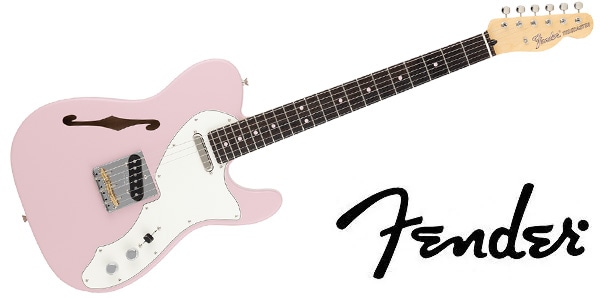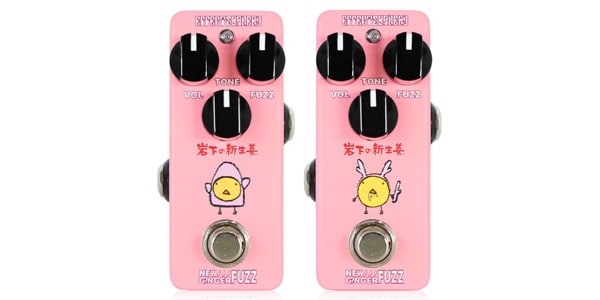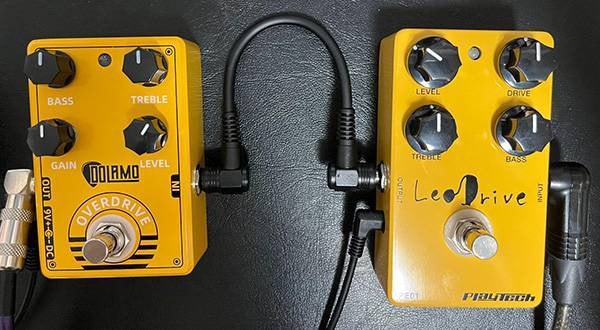Fuzz. Whether cheap or expensive, it's a pedal that always brings a unique character that you can’t find anywhere else...
And now, another distinctive personality has joined the dreamy world of fuzz pedals.
Introducing the PLAYTECH Scorpio Fuzz!
A super low-priced model from Sound House’s original brand.
As I mentioned at the beginning, fuzz pedals aren’t just about being cheap—even affordable ones offer more than just their price tag.
For example, the BEHRINGER SF300 Super Fuzz is a beloved gem, known for its aggressive "FUZZ 2" mode that delivers an almost excessive level of distortion.
Fuzz pedals are chosen not just for their price—but because they each bring something special to the table.
What kind of fuzz is the Scorpio?
Now, let’s get back to the Scorpio Fuzz and take a closer look at what kind of pedal it really is.
When you open the box, you’ll find the pedal wrapped in protective cushioning, along with just a set of rubber feet, with no manual or extras. It’s simple packaging, which feels very much in line with what you’d expect from a private-brand product.
Time to meet the unit itself.

The first thing that catches your eye is the dusty pink body. It’s an unusual color for a fuzz pedal, but it also feels in line with recent trends.
This same shade has appeared on Japanese-made Fender models and the flagship YAMAHA PACIFICA as well.
FENDER / MJI Ltd Kusumi Telecaster Thinline, RW FB, Kusumi Pink
YAMAHA / Pacifica Standard Plus ASH PINK
In the center of the body, “Scorpio Fuzz” is written in white letters. The “S” is shaped like a scorpion, which is a cute touch.
The three knobs on the top control LEVEL, TONE, and SUSTAIN, respectively. The layout is reminiscent of the king of fuzz pedals—the Big Muff.
It’s a design that feels even more endearing in person than it does in photos.
From here, let’s take a look at the sound and how each knob responds.
My first impression when I switched it on was that it feels more like a distortion. However, the way the sustain stretches out definitely gives it that distinct fuzz character.
When you turn the TONE all the way up, the low end gets pretty thin, giving it a scratchy, fizzy feel. It keeps the chord definition fairly well, but leans heavily into the treble range. It might come off as harsh for chord backing, but it could work nicely for solos.
On the other hand, turning the TONE all the way down gives it a slightly muffled character. Personally, I preferred keeping the tone on the higher side.
Next, let’s try adjusting the Sustain knob. When turned all the way up, as the name suggests, the sustain really stretches out. Depending on your playing style, you might be able to make it sustain even longer. It produces a sound that seems great for guitar solos. When sustain is set to minimum, the Scorpio’s character feels pretty much lost. It’s a very extreme setting, so I doubt many people would use it that way. Interestingly, even when adjusting to the sustain, the perceived level of distortion didn’t change much.
Finally, let’s adjust the level knob. At its maximum, instead of just increasing the volume, the distortion becomes much more intense—so much so that the sound turns into a mushy, broken-up fuzz. This part likely varies depending on the amp you use. At the minimum setting, no sound came out.
After trying out all the knobs, it became clear that tone is the one that most noticeably affects the character of the sound. Adjusting the tone also changes the volume and gain to some extent, so it seems best to start by dialing in the tone you want with the tone knob, and then use level and sustain for fine-tuning.
In summary: it doesn’t offer a wide tonal range, but it’s easy to use with simple controls—a fuzz that leans toward distortion.
Is this one the Scoprio’s rival in competition?
We’re starting to get a pretty good idea of what kind of fuzz the Scorpio is. By the way, when you hear “pink fuzz pedal”, does something else come to mind besides the Scorpio? Bright pink, a small enclosure, and that quirky pickled ginger mascot...
That’s right! It’s the well-known New Ginger Fuzz from Effects Bakery.
Like the Scorpio, New Ginger is also a low-priced fuzz pedal. I couldn’t help but wonder what kind of personality each of them would show in a head-to-head comparison.
So now, let’s have a serious showdown between the two pink fuzz giants.
New Ginger delivers distortion with both thickness and presence. Compared to the Scorpio, this one feels more like a classic fuzz. However, the Scorpio has the edge when it comes to sustain.
New Ginger is marketed as a sharp, crisp fuzz, and comparing it with the Scorpio really makes this clear.
When you turn the tone on the New Ginger all the way up, the sense of chord clarity seems to fade. However, the low-end thickness is still very much present. Unlike the Scorpio, which shifts the overall character toward the treble side, New Ginger brings out more overtones.
Even with the tone turned all the way down, the low end doesn’t change much. It seems that the tone knob on New Ginger mostly affects the high-frequency range.
Next, let’s turn the fuzz knob on the New Ginger all the way up. With fuzz at maximum, you get a sputtering texture and a noticeable increase in intensity. On the other hand, when set to minimum, the amount of distortion decreases, and you start to hear a sparkling quality in the high frequencies.
Just as the name suggests, this knob controls how “fuzz-like” the sound is. This is a completely different function from the Scorpio’s sustain knob.
Lastly, let’s talk about the level control. While the Scorpio increased distortion more than volume, the New Ginger seems to purely adjust the volume. Of course, a stronger input signal into the amp will naturally cause some distortion, but it’s not nearly as noticeable as with the Scorpio.
After the intense showdown
So, what did you think? Both pedals gave an excellent battle.
Personally, I felt that the Scorpio is a fuzz you’d want to use like a distortion. It’s great for combining with other gain pedals. On the other hand, the New Ginger is an easy-to-use fuzz even for rhythm playing, while still retaining that classic fuzz character.
Both were definitely worthy of being called pink fuzz pedals.
So, this match ends in a draw.
I look forward to seeing readers like you host the rematch yourselves.
Thank you again for reading.
The “sound & person” column is made up of contributions from you.
For details about contributing, click here.





















![[2025 Edition] Top 5 Recommended Fuzz Pedals!!](/contents/uploads/thumbs/2/2023/12/20231204_2_24801_1.jpg)

![[Latest for 2025] The 10 Best Effects Pedals for Guitar Beginners!](/contents/uploads/thumbs/2/2022/5/20220526_2_18129_1.jpg)

 【初心者向け】エフェクター講座
【初心者向け】エフェクター講座
 初心者必見!PLAYTECH 激スゴの理由!
初心者必見!PLAYTECH 激スゴの理由!
 あなたのエフェクターボード見せてください
あなたのエフェクターボード見せてください
 ベース用エフェクターの種類
ベース用エフェクターの種類
 エフェクターのつなぎ方
エフェクターのつなぎ方
 エフェクターの種類
エフェクターの種類















